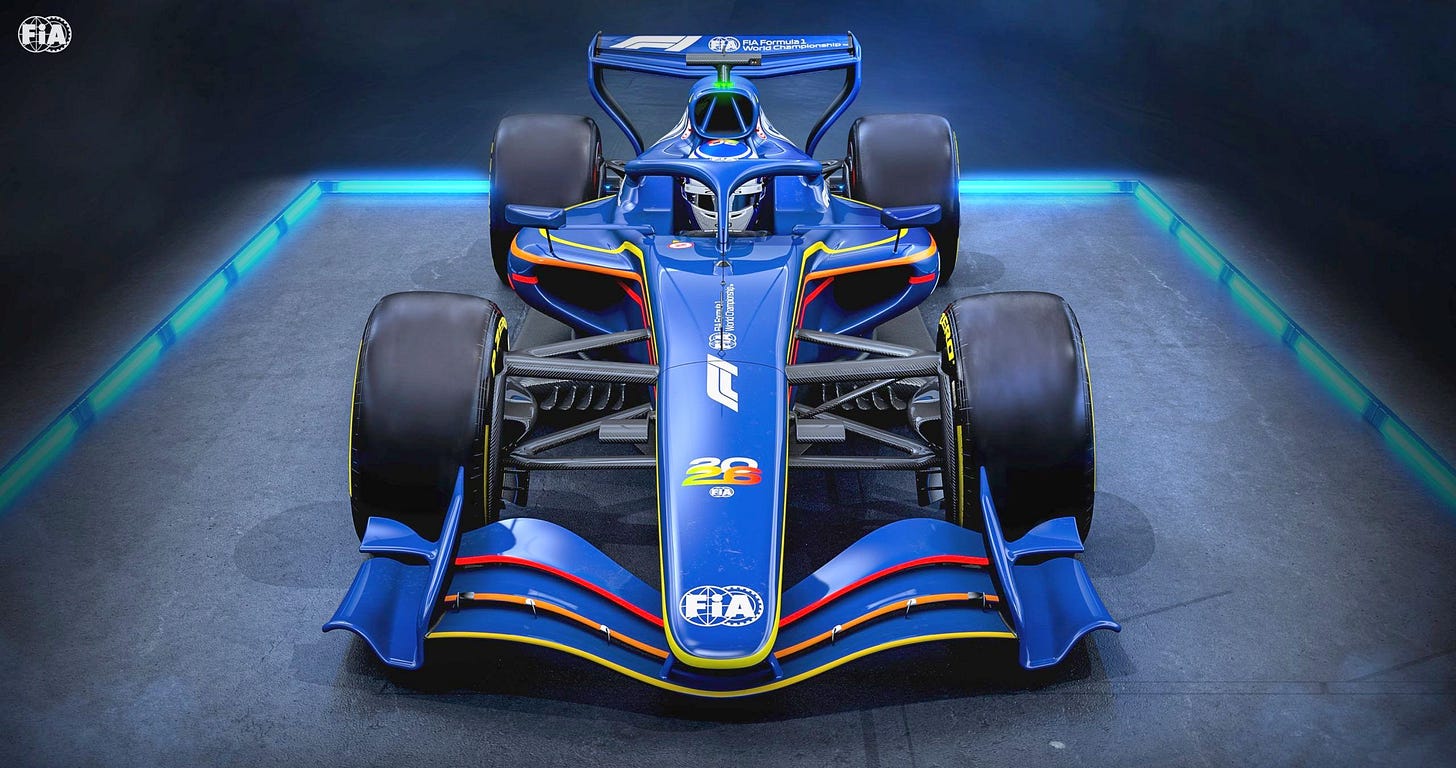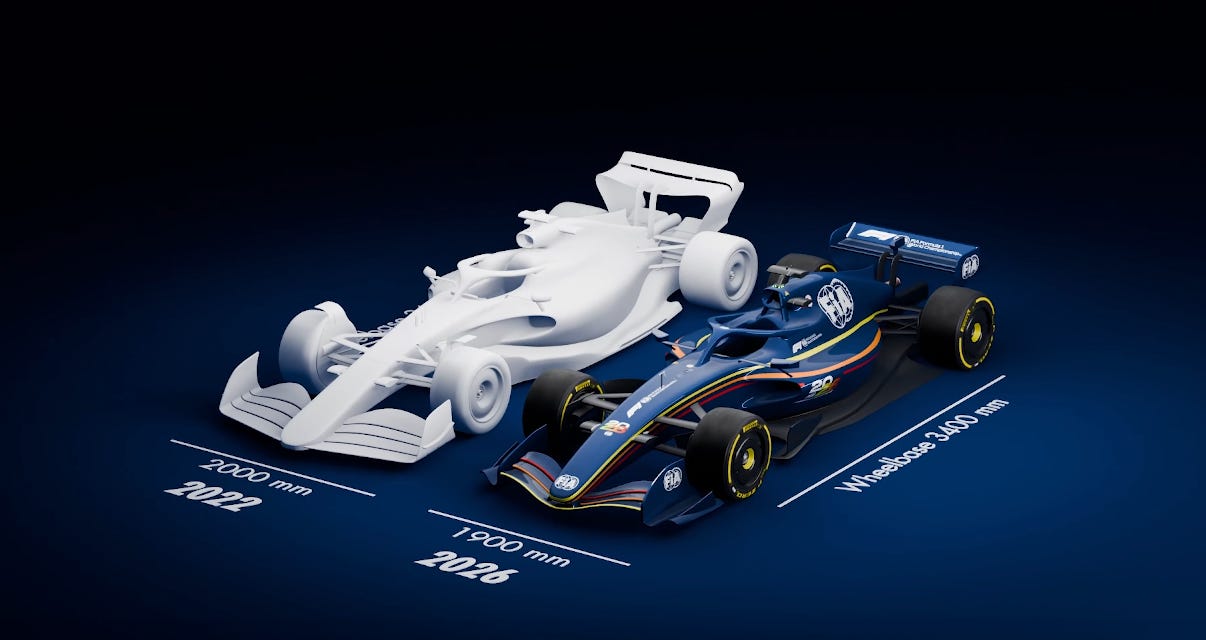TIL #92: Into The Unknown
The mystery and apprehension around the 2026 regulations
The Installation Lap is a weekly Substack column dedicated to helping Americans develop a deeper appreciation for Formula 1.

Of all the things about Formula 1 that are odd, peculiar, or downright bizarre as compared to other global sports, the one thing that leaps out at newer fans is F1’s penchant for changing the rules. The last time F1 changed its rules or formula was in 2022. That regulation change was the biggest change since 2014. 2022 saw the return of ground effects cars for the first time since 1977—ie, cars that derive their downforce primarily from air flow interacting with the floor of the car. The rules are set to change again in 2026, and this time, the changes will be massive.
The 2014 rule change was big because it introduced the turbo—hybrid engine. 2022 was significant because it changed how cars generate and utilize their downforce. The 2026 rule change will be massive because both the aerodynamics and engines of the cars will change. This distinction is important because every time there is a regulation change in F1, it is advertised as being “big.” Secondly, this rule change is in fact big because so much about the cars is changing, and there are tremendous opportunities afoot for a proper, lottery-style shake-up of the grid and its competitive order.

If you’re running late for work and don’t have time for The Installation Lap today, I’ll give you the big takeaway on the 2026 regulation change right now:
Keep reading with a 7-day free trial
Subscribe to The Installation Lap to keep reading this post and get 7 days of free access to the full post archives.


